Dan Malkin
Dima
Gemma 3 Technical Report
Mar 25, 2025Abstract:We introduce Gemma 3, a multimodal addition to the Gemma family of lightweight open models, ranging in scale from 1 to 27 billion parameters. This version introduces vision understanding abilities, a wider coverage of languages and longer context - at least 128K tokens. We also change the architecture of the model to reduce the KV-cache memory that tends to explode with long context. This is achieved by increasing the ratio of local to global attention layers, and keeping the span on local attention short. The Gemma 3 models are trained with distillation and achieve superior performance to Gemma 2 for both pre-trained and instruction finetuned versions. In particular, our novel post-training recipe significantly improves the math, chat, instruction-following and multilingual abilities, making Gemma3-4B-IT competitive with Gemma2-27B-IT and Gemma3-27B-IT comparable to Gemini-1.5-Pro across benchmarks. We release all our models to the community.
ECLeKTic: a Novel Challenge Set for Evaluation of Cross-Lingual Knowledge Transfer
Feb 28, 2025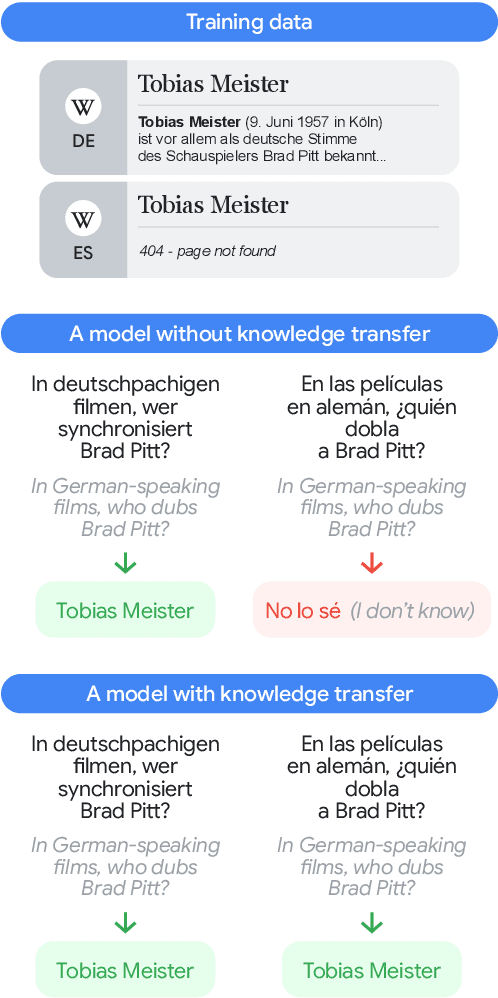
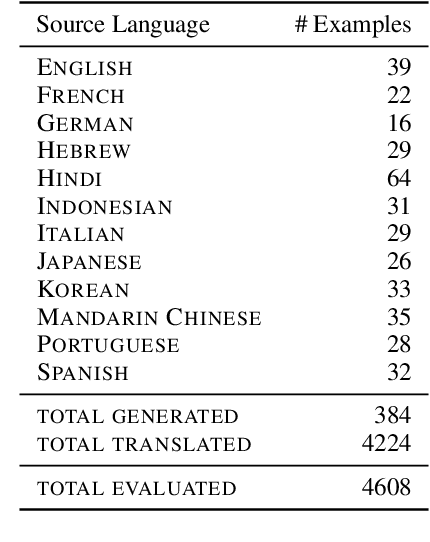
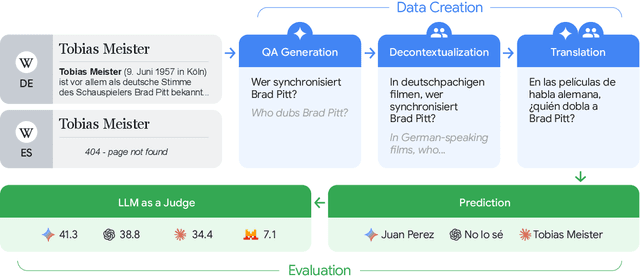
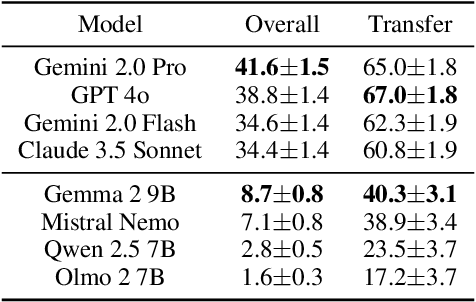
Abstract:To achieve equitable performance across languages, multilingual large language models (LLMs) must be able to abstract knowledge beyond the language in which it was acquired. However, the current literature lacks reliable ways to measure LLMs' capability of cross-lingual knowledge transfer. To that end, we present ECLeKTic, a multilingual closed-book QA (CBQA) dataset that Evaluates Cross-Lingual Knowledge Transfer in a simple, black-box manner. We detected information with uneven coverage across languages by controlling for presence and absence of Wikipedia articles in 12 languages. We generated knowledge-seeking questions in a source language, for which the answer appears in a relevant Wikipedia article and translated them to all other 11 languages, for which the respective Wikipedias lack equivalent articles. Assuming that Wikipedia reflects the prominent knowledge in the LLM's training data, to solve ECLeKTic's CBQA task the model is required to transfer knowledge between languages. Experimenting with 8 LLMs, we show that SOTA models struggle to effectively share knowledge across, languages even if they can predict the answer well for queries in the same language the knowledge was acquired in.
State of What Art? A Call for Multi-Prompt LLM Evaluation
Dec 31, 2023Abstract:Recent advances in large language models (LLMs) have led to the development of various evaluation benchmarks. These benchmarks typically rely on a single instruction template for evaluating all LLMs on a specific task. In this paper, we comprehensively analyze the brittleness of results obtained via single-prompt evaluations across 6.5M instances, involving 20 different LLMs and 39 tasks from 3 benchmarks. To improve robustness of the analysis, we propose to evaluate LLMs with a set of diverse prompts instead. We discuss tailored evaluation metrics for specific use cases (e.g., LLM developers vs. developers interested in a specific downstream task), ensuring a more reliable and meaningful assessment of LLM capabilities. We then implement these criteria and conduct evaluations of multiple models, providing insights into the true strengths and limitations of current LLMs.
You Can Have Your Data and Balance It Too: Towards Balanced and Efficient Multilingual Models
Oct 13, 2022



Abstract:Multilingual models have been widely used for cross-lingual transfer to low-resource languages. However, the performance on these languages is hindered by their underrepresentation in the pretraining data. To alleviate this problem, we propose a novel multilingual training technique based on teacher-student knowledge distillation. In this setting, we utilize monolingual teacher models optimized for their language. We use those teachers along with balanced (sub-sampled) data to distill the teachers' knowledge into a single multilingual student. Our method outperforms standard training methods in low-resource languages and retrains performance on high-resource languages while using the same amount of data. If applied widely, our approach can increase the representation of low-resource languages in NLP systems.
A Balanced Data Approach for Evaluating Cross-Lingual Transfer: Mapping the Linguistic Blood Bank
May 09, 2022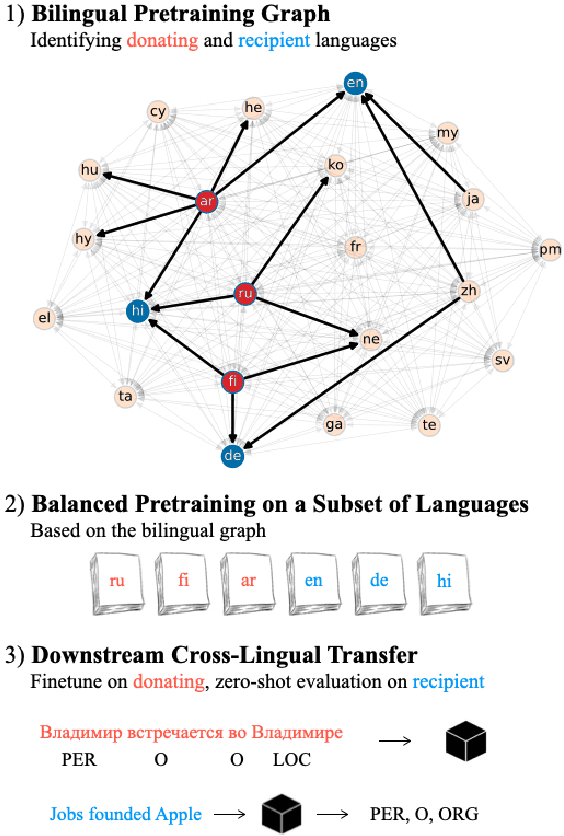
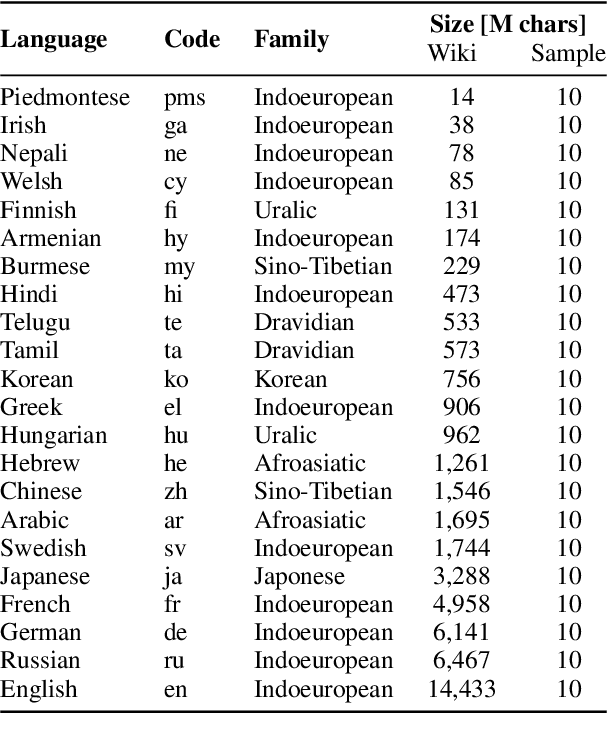
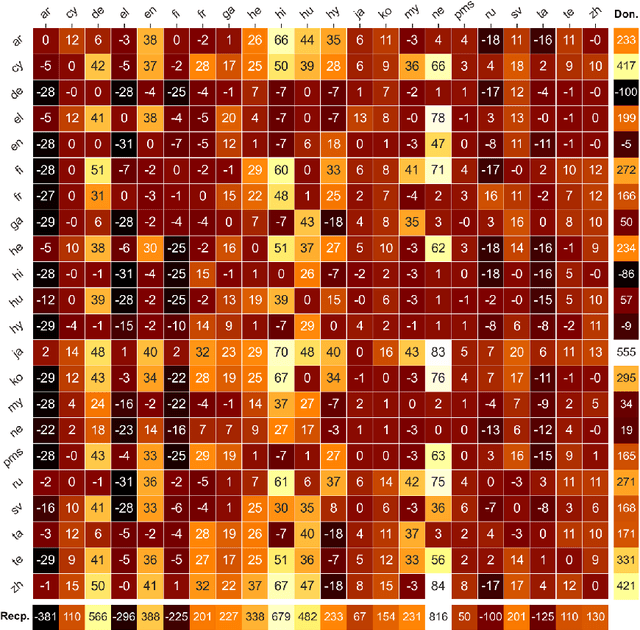

Abstract:We show that the choice of pretraining languages affects downstream cross-lingual transfer for BERT-based models. We inspect zero-shot performance in balanced data conditions to mitigate data size confounds, classifying pretraining languages that improve downstream performance as donors, and languages that are improved in zero-shot performance as recipients. We develop a method of quadratic time complexity in the number of languages to estimate these relations, instead of an exponential exhaustive computation of all possible combinations. We find that our method is effective on a diverse set of languages spanning different linguistic features and two downstream tasks. Our findings can inform developers of large-scale multilingual language models in choosing better pretraining configurations.
 Add to Chrome
Add to Chrome Add to Firefox
Add to Firefox Add to Edge
Add to Edge